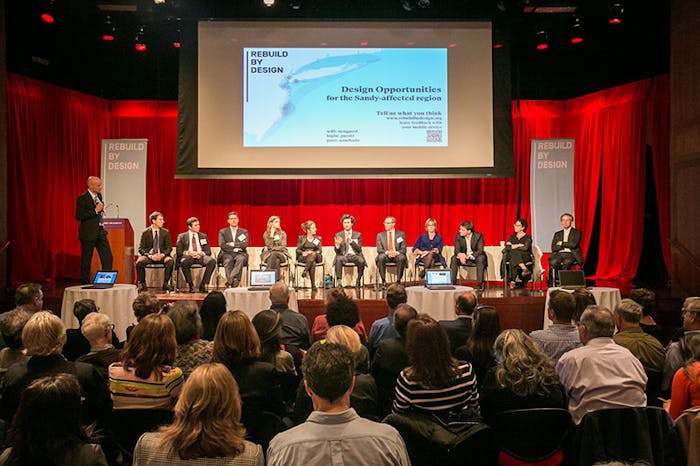Design Competition Origins
On June 20, 2013, the Rebuild by Design (RBD) design competition for rebuilding after Hurricane Sandy was launched by the U.S. Department of Housing and Urban Development and President Obama’s Hurricane Sandy Rebuilding Task Force.
The RBD competition was a ground-breaking approach designed to spur innovation in the disaster recovery process and to catalyze cutting-edge projects that could demonstrate how communities can rebuild with resilience. The competition asked multi-disciplinary teams of architects, planners, designers, engineers and academics to work with the Sandy Region to develop innovative solutions to the challenges of post-disaster rebuilding.
The organizers and teams sought to inspire affected communities to rebuild differently in ways that would enhance their physical, economic, social, and environmental resilience.
Source: The Rebuild by Design Book

 11 Sustainable Cities and Communities
11 Sustainable Cities and Communities
 13 Climate Action
13 Climate Action